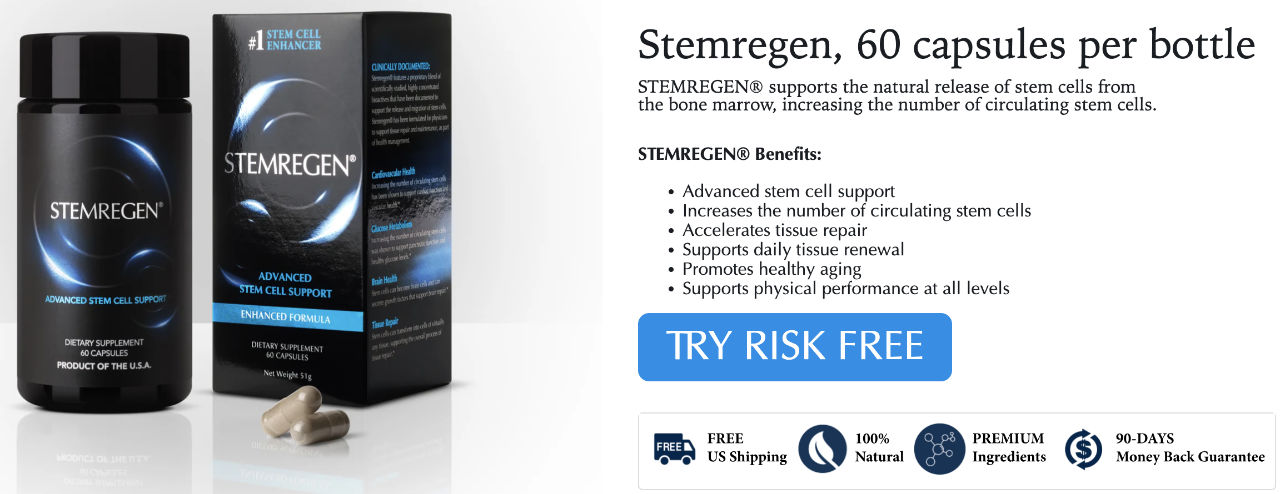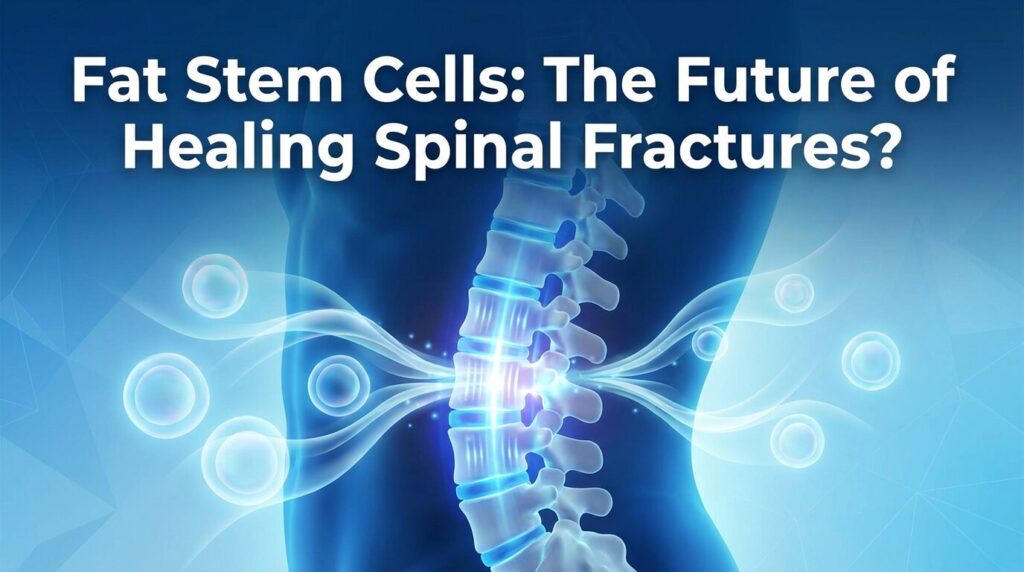Are you dealing with a torn meniscus and wondering if stem cell therapy could help you avoid surgery? Have you heard promising claims about stem cell treatments for knee injuries? Do you want to know if stem cell therapy can actually repair meniscus damage?
These questions reflect the hopes of many patients facing meniscus tears who are looking for alternatives to traditional surgery. Understanding what stem cell therapy can and cannot do for meniscus repair is crucial for making informed treatment decisions.
Understanding Meniscus Tears and Healing Challenges
The meniscus is a C-shaped piece of cartilage that acts as a shock absorber between your thighbone and shinbone. Each knee has two menisci – one on the inner side (medial) and one on the outer side (lateral).
Why Meniscus Tears Don’t Heal Naturally
Meniscus tissue has limited healing capacity due to its unique structure:
- Avascular zones: The inner two-thirds of the meniscus has no blood supply
- Hypocellular nature: Very few cells are present to facilitate repair
- Dense collagen structure: Tough fibrous tissue resists regeneration
- Mechanical stress: Constant loading prevents healing
| Meniscus Zone | Blood Supply | Healing Potential |
|---|---|---|
| Outer third (red zone) | Good | Moderate to good |
| Middle third (red-white zone) | Limited | Poor |
| Inner third (white zone) | None | Very poor |
Traditional Treatment Limitations
Conventional treatments for meniscus tears include:
Conservative management:
- Rest and ice for symptom relief
- Physical therapy to strengthen surrounding muscles
- Anti-inflammatory medications
- Activity modification
Surgical options:
- Meniscectomy (removal of torn tissue)
- Meniscus repair (suturing torn edges)
- Meniscus transplantation (in severe cases)
However, meniscectomy accelerates joint degeneration and increases arthritis risk, while repair success rates are limited by poor blood supply to damaged areas.
The Promise of Stem Cell Therapy
How Stem Cell Therapy Works
Stem cell therapy aims to enhance the body’s natural healing mechanisms by:
- Providing regenerative cells capable of becoming cartilage
- Releasing growth factors that stimulate repair
- Reducing inflammation in the joint
- Promoting blood vessel formation to improve healing
Types of Stem Cells Used
Mesenchymal stem cells (MSCs) are most commonly used for meniscus repair:
Bone marrow-derived MSCs:
- Harvested from the patient’s hip bone
- High regenerative potential
- Well-studied in clinical research
- Autologous (patient’s own cells)
Adipose-derived MSCs:
- Obtained from fat tissue
- Easier to harvest than bone marrow
- Abundant cell numbers
- Good differentiation potential
Umbilical cord MSCs:
- Allogeneic (donor) cells
- Young and potent
- Readily available
- Lower immunogenicity
Current Research Evidence
Preclinical Studies
Animal studies have shown promising results for stem cell therapy in meniscus repair:
Sheep and goat models:
- Improved tissue regeneration compared to controls
- Better biomechanical properties of repaired tissue
- Reduced joint degeneration over time
- Integration with existing meniscus tissue
Rabbit studies:
- Cartilage-like tissue formation in treated areas
- Increased cell proliferation and matrix production
- Improved healing in avascular zones
- Functional improvement in joint mechanics
Clinical Trial Results
Human studies provide mixed but encouraging results:
Small-scale trials (2019-2024):
- Pain reduction in 60-80% of patients
- Functional improvement in daily activities
- MRI evidence of tissue regeneration in some cases
- Minimal side effects reported
Limitations of current studies:
- Small patient numbers (typically 10-50 participants)
- Short follow-up periods (6 months to 2 years)
- Lack of control groups in many studies
- Variable treatment protocols
Systematic Reviews
A 2022 review published in Stem Cell Research & Therapy found [1]:
- Stem cell therapy shows promise for meniscus repair
- Significant heterogeneity between studies
- Need for larger, controlled trials
- Potential for tissue regeneration demonstrated
Treatment Approaches and Techniques
Injection-Based Therapies
Direct injection of stem cells into the knee joint:
Intra-articular injection:
- Minimally invasive procedure
- Outpatient treatment
- Local anesthesia only
- Quick recovery time
Guided injection techniques:
- Ultrasound guidance for precise placement
- MRI guidance for complex cases
- Arthroscopic delivery during surgery
- Multiple injection sites if needed
Tissue Engineering Approaches
Combining stem cells with scaffolds for enhanced repair:
Scaffold materials:
- Collagen matrices that mimic natural meniscus
- Synthetic polymers for structural support
- Hydrogels for cell delivery
- Decellularized tissues from donors
Advantages of scaffolds:
- Provide structure for cell growth
- Deliver growth factors in controlled manner
- Protect cells from mechanical stress
- Guide tissue formation
Combination Therapies
Enhanced treatments using multiple approaches:
Stem cells plus platelet-rich plasma (PRP):
- Growth factors from platelets
- Enhanced healing signals
- Reduced inflammation
- Improved cell survival
Stem cells plus hyaluronic acid:
- Joint lubrication improvement
- Anti-inflammatory effects
- Cell protection and nutrition
- Extended treatment effects
Treatment Outcomes and Expectations
Success Rates
Current clinical data suggests:
Pain relief:
- 60-80% of patients report pain reduction
- Improvement typically seen within 3-6 months
- Variable duration of benefits (6 months to 2+ years)
- Individual responses vary significantly
Functional improvement:
- Enhanced mobility in daily activities
- Improved sports performance in some patients
- Better quality of life scores
- Reduced need for pain medications
Factors Affecting Success
Patient characteristics that influence outcomes:
Age and activity level:
- Younger patients tend to respond better
- Active individuals may see greater improvement
- Baseline fitness affects recovery
- Motivation for rehabilitation important
Tear characteristics:
- Smaller tears respond better than large ones
- Acute injuries may heal better than chronic tears
- Location affects healing potential
- Associated injuries complicate treatment
Treatment factors:
- Cell quality and viability
- Injection technique and placement
- Post-treatment care and rehabilitation
- Number of treatments received
Realistic Expectations
Patients should understand that stem cell therapy:
- May not completely regenerate meniscus tissue
- Provides symptom relief rather than structural cure
- Requires time for effects to develop
- May need repeat treatments
- Works best as part of comprehensive care
Comparing Stem Cell Therapy to Other Treatments
Stem Cells vs. Surgery
| Treatment | Invasiveness | Recovery Time | Success Rate | Complications |
|---|---|---|---|---|
| Stem cell injection | Minimal | 1-2 weeks | 60-80% | Very low |
| Meniscus repair | Moderate | 3-6 months | 70-90% | Low to moderate |
| Meniscectomy | Moderate | 6-12 weeks | 80-95% | Moderate |
Advantages of Stem Cell Therapy
Benefits compared to surgery:
- Minimally invasive procedure
- Faster recovery time
- Lower complication risk
- Preserves natural tissue
- Can be repeated if needed
Limitations of Stem Cell Therapy
Drawbacks compared to surgery:
- Less predictable outcomes
- Limited evidence for severe tears
- May not work for all patients
- Requires multiple treatments
- Not covered by most insurance
Patient Selection Criteria
Ideal Candidates
Best candidates for stem cell therapy include:
Clinical characteristics:
- Small to moderate meniscus tears
- Symptoms for less than 2 years
- Failed conservative treatment
- Good overall health status
- Realistic expectations
Imaging findings:
- Partial-thickness tears
- Minimal arthritis in the joint
- Adequate bone quality
- No significant ligament damage
Poor Candidates
Patients unlikely to benefit:
- Complete meniscus loss
- Severe arthritis present
- Multiple previous surgeries
- Unrealistic expectations
- Poor compliance with follow-up
Treatment Protocol and Recovery
Pre-Treatment Preparation
Before stem cell therapy:
Medical evaluation:
- Complete history and physical exam
- MRI imaging to assess tear severity
- Blood tests for overall health
- Discussion of expectations and risks
Preparation steps:
- Stop anti-inflammatory medications
- Optimize nutrition and hydration
- Plan for recovery time
- Arrange transportation for procedure day
The Treatment Process
Typical procedure involves:
Cell harvesting (if using patient’s cells):
- Local anesthesia at harvest site
- Bone marrow or fat tissue collection
- Cell processing in laboratory
- Quality testing of final product
Injection procedure:
- Sterile preparation of knee
- Local anesthesia if needed
- Guided injection into joint
- Post-injection monitoring
Recovery and Rehabilitation
Post-treatment care includes:
Immediate recovery (first 24-48 hours):
- Rest and ice application
- Avoid strenuous activity
- Monitor for complications
- Pain management as needed
Early recovery (first 2 weeks):
- Gentle range of motion exercises
- Gradual return to walking
- Physical therapy evaluation
- Follow-up appointment
Long-term recovery (2-6 months):
- Progressive exercise program
- Strength training
- Activity modification
- Regular monitoring of progress
Costs and Insurance Coverage
Treatment Costs
Stem cell therapy for meniscus repair typically costs:
| Treatment Type | Cost Range |
|---|---|
| Single injection | $3,000 – $8,000 |
| Multiple treatments | $8,000 – $15,000 |
| With scaffolds | $10,000 – $20,000 |
| Research protocols | Variable/free |
Insurance Coverage
Most insurance plans do not cover stem cell therapy for meniscus repair because:
- Considered experimental by most insurers
- Lack of FDA approval for this indication
- Limited long-term outcome data
- Alternative treatments available
Financial Considerations
Payment options may include:
- Medical financing plans
- Health savings accounts (HSAs)
- Payment plans from providers
- Clinical trial participation
Future Directions and Research
Ongoing Clinical Trials
Current research focuses on:
- Larger randomized controlled trials
- Long-term follow-up studies
- Optimal cell types and doses
- Combination therapies
- Patient selection criteria
Technological Advances
Emerging technologies include:
3D bioprinting:
- Custom scaffolds for individual patients
- Precise cell placement
- Complex tissue structures
- Improved integration
Gene therapy:
- Enhanced cell function
- Growth factor production
- Anti-inflammatory effects
- Improved survival
Regulatory Pathway
FDA approval for stem cell therapy will require:
- Large-scale clinical trials
- Standardized protocols
- Long-term safety data
- Cost-effectiveness analysis
Making an Informed Decision
Questions to Ask Your Doctor
Before considering treatment:
- Am I a good candidate for stem cell therapy?
- What are my other treatment options?
- What results can I realistically expect?
- What are the risks and potential complications?
- How much experience do you have with this treatment?
Seeking Multiple Opinions
Consider consulting:
- Orthopedic surgeons specializing in knee injuries
- Sports medicine physicians
- Regenerative medicine specialists
- Physical therapists
Clinical Trial Participation
Benefits of clinical trials:
- Access to cutting-edge treatments
- Comprehensive medical care
- Rigorous safety monitoring
- Contribution to medical knowledge
The Bottom Line on Stem Cell Therapy for Meniscus Repair
Current evidence suggests that stem cell therapy may help some patients with meniscus tears, but it is not a miracle cure. Key points to remember:
Potential benefits:
- Pain reduction in 60-80% of patients
- Functional improvement for daily activities
- Minimally invasive treatment option
- May delay need for surgery
Limitations:
- Limited long-term data available
- Variable results between patients
- Not effective for all types of tears
- Expensive and usually not covered by insurance
Best candidates are patients with:
- Small to moderate tears
- Recent onset symptoms
- Failed conservative treatment
- Realistic expectations
Work with qualified healthcare providers to determine if stem cell therapy is appropriate for your specific situation. Consider all treatment options, including proven therapies, before making a decision.
Remember: While stem cell therapy shows promise, it remains an evolving field. The most important factor is working with experienced medical professionals who can guide you toward the most appropriate treatment for your individual needs.
References
[1] Bian Y, et al. Meniscus repair: up-to-date advances in stem cell-based therapy. Stem Cell Research & Therapy. 2022;13:207. https://stemcellres.biomedcentral.com/articles/10.1186/s13287-022-02863-7
[2] Jacob G, et al. The Meniscus Tear: A Review of Stem Cell Therapies. Cells. 2019;9(1):92. https://pmc.ncbi.nlm.nih.gov/articles/PMC7016630/
[3] Mayo Clinic. Novel stem cell therapy for repair of knee cartilage. December 29, 2018. https://www.mayoclinic.org/medical-professionals/orthopedic-surgery/news/novel-stem-cell-therapy-for-repair-of-knee-cartilage/mac-20450891
[4] Ding G, et al. Mesenchymal Stem Cells From Different Sources in Meniscus Repair and Regeneration. Frontiers in Bioengineering and Biotechnology. 2022;10:796367. https://pmc.ncbi.nlm.nih.gov/articles/PMC9091333/
[5] Regen Ortho Sport. Stem Cell Therapy for Meniscus Tear: Alternative to Knee Surgery. October 18, 2023. https://regenorthosport.com/stem-cell-therapy-for-meniscus-tear-alternative-to-knee-surgery/


